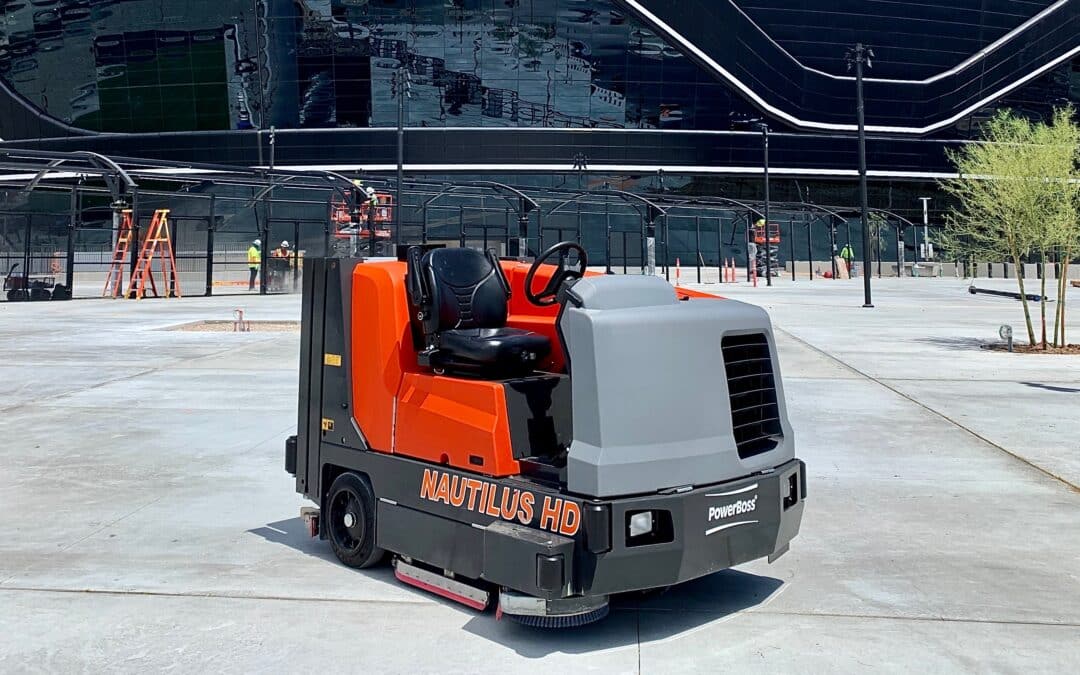When you’re making an investment in floor cleaning equipment and solutions for your warehouse, it’s essential to have the right equipment. Deciding between a sweeper, a scrubber, or a combination of both can be a challenging task, as each of these machines serves a different and specific purpose. Understanding the key differences is important to make sure you are making the best decision based on your unique application.
The Difference Between Sweepers & Scrubbers
If you primarily deal with outdoor or larger areas that accumulate dry debris, a sweeper is the best option. They are commonly used in outdoor areas or larger indoor spaces like warehouses, parking lots, and construction sites. Sweepers are equipped with rotating brushes and a vacuum system that effectively sweeps up the material into a collection bin or bag. They come in different sizes, ranging from small, handheld models to large ride-on machines. Sweepers cover ground faster than a scrubber does and require less maintenance.
However, if you prioritize deep cleanliness and sanitation, then investing in a scrubber is the ideal choice. Scrubbers are purposefully designed to thoroughly clean various hard floor surfaces, such as concrete, tile, vinyl, and epoxy. They are commonly utilized in large facilities such as hospitals, grocery stores, restaurants, schools, and shopping malls. Depending on the size and model, scrubbers can either be operated manually or as ride-on machines for larger areas. Unlike sweepers that gather debris, scrubbers employ brushes or scrub pads, along with a detergent solution and water, to effectively eliminate dirt, grime, and stains from the surface. Another notable distinction is that the operation of a floor scrubber typically requires more labor. It entails filling and emptying the water container, as well as maintaining and replacing the brushes, squeegees, and pads as needed.
If you are looking for an efficient, labor-saving, effective means of sweeping and scrubbing, consider investing in a combination machine. While the purchase price may be higher compared to buying separate machines for sweeping and scrubbing, it can save on labor costs as the operator only needs to make a single pass. These versatile machines not only sweep up dirt and debris but also possess the deep-cleaning capabilities of a scrubber. By eliminating the need for multiple machines or manual labor, they save time and reduce workforce requirements.
Walk-Behind or Ride-On
Sweepers, scrubbers, and sweeper/scrubbers come in two modes of operation—walk-behind or ride-on. A ride-on sweeper is built to be ridden on by the operator. They are larger in size and often equipped with a driver’s seat and controls. Ride-on machines are more suitable for larger areas or open spaces such as food manufacturing facilities, as they offer higher productivity due to their larger cleaning path and increased tank capacity.
Walk-behind sweepers and scrubbers are compact machines that are operated by a person walking behind the machine as they navigate through the cleaning area. Walk-behind machines are suitable for smaller spaces or areas with obstacles and tight corners. They are generally more maneuverable and easier to operate in confined spaces.
Maximize Your Floor Cleaning Efficiency
Ultimately, it is important to evaluate your floor cleaning needs, consider the size of the area to be cleaned, the type of dirt and debris you commonly encounter, and your budget. Consulting with a professional or a supplier can further guide you towards the most suitable solution for your floor cleaning requirements.


